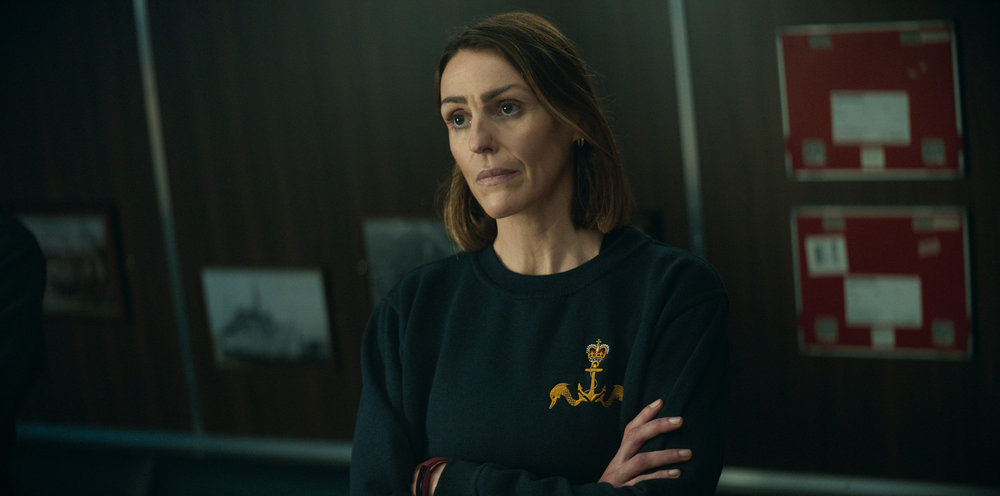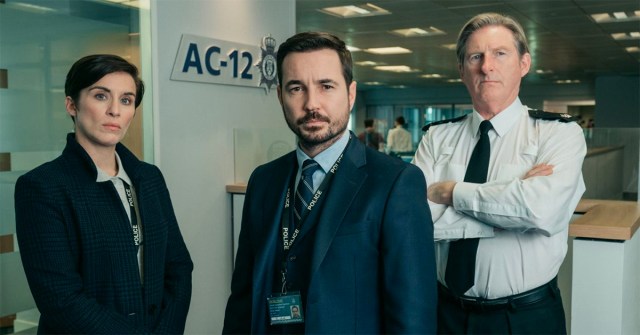
BBC/Peacock murder mystery Vigil, set aboard a nuclear submarine, was the broadcaster’s biggest domestic ratings hit of 2021. Now available via BBC and ITV streamer Britbox, among other outlets, it’s time to take a deep dive into how the show was made.
The indie outfit behind the six-part drama has pedigree. World Productions, part of ITV Studios, produces the hugely popular police thriller series Line of Duty, and also made the political thriller Bodyguard, which was the highest-rated BBC drama for three years until Vigil broke that record, reaching 13.4 million viewers earlier this year.
The show is set in Scotland (where the UK’s nuclear submarine fleet is based), and the premise is that a land-based detective is tasked to investigate the death of one of the crew of the HMS Vigil while the sub is at sea. Things get murkier from there.
Given the nature of the subject matter, the Royal Navy did not offer much in the way of cooperation. Nuclear subs are shrouded in secrecy.
“I don’t think that they were interested in engaging with us,” Matt Gray, BSC noted in an interview with British Cinematographer. “[Nuclear submarines] are just short of one and a half football pitches long, eight double decker buses deep, generate their own airflow, and have unlimited power. They are designed to be invisible. We also had to piece together the world of the Navy base which was a combination of visual effects and the clever use of locations.”
The Hunt for Red October was natural touchpoint for designing the visual grammar of the show, along with sci-fi films like Alien for creating a claustrophobic environment deep underwater.
“It’s completely artificial… and what it does to your senses and mind,” says Gray, who was hired for Vigil by series director James Strong. “We tried to create a sense of depth. You are on different decks and the way that piece of engineering is created you have your nuclear tubes and reactor, and the human element fits in around those components.”
Series creator Tom Edge had done a lot of research, but a large part of the show’s credibility stems from the production design of the submarine. Edge and production designer Tom Swayer talked to former submariners and scoured the internet for similar vessels. The space had to be big enough to contain the story action and flexible enough to work in and yet retain all the claustrophobia of a real submarine. For the interior of the HMS Vigil, LED Astera tubes were linked back to an iPad via Wi-Fi.
“We did some testing in the submarine set, but some adjustments had to be made so that the Steadicam was able to take full advantage,” Gray tells Definition. “We wanted the camera to be constantly moving and flowing through the environment — never letting it get too static, not to distract from the pace of the story.”
READ MORE: In the Deep End: Vigil’s Production Secrets Uncovered (Definition)
A lot of the tension in the series comes from the twin tracks of story — one on the submarine and the other following another detective investigating on land.
Gray gave each track a different but complementary color scheme, as he explained to British Cinematographer: “We were working with more man-made industrial colors inside of the sub like acidic yellows, greens and reds. There were different states so when the sub was on different levels of power that was denoted by the way the lighting would adjust. When on land, we tried to have natural interpretations of the same colors.”
READ MORE: Matt Gray BSC/Vigil: Water-Tight Case (British Cinematographer)
He shot with a pair of ARRI Alexa LF cameras in 4K HDR, delivered as a 2:1 aspect ratio and graded in ACES. The lenses were a combination of Zeiss Master anamorphic primes, Kowa anamorphic 75 mm, and Tokina Vista spherical.
Goodbye Kansas Studios delivered 180 VFX shots for the series, including a detailed 150-meter model of the Trident submarine — again having to create a convincing model through extensive research.
Detailing the process for Befores & Afters, VFX supervisor Jim Parsons said, “We even went so far as talking to a former Navy officer… obviously without breaking any official secrets! The next challenge was to submerge HMS Vigil into the ‘digital North Sea’, developing each shot to make the submarine look like more than a long object in a dark ocean. We created a thickness to the water that allowed pools of light through it, creating a sinister and ominous mood, with every shot of the submarine adding to the atmosphere of the show’s mystery.”
Some important scenes feature a fishing trawler that, due to the complexity of the sequences, called for it to be shot in many different locations, including in a bay and in a stationary dock.
“A lot of our work involved removing external scenery, creating the illusion that it was nowhere near land,” Parson explained. “Some underwater scenes with actors were also filmed at the Pinewood Studios water tank, which involved having to remove the external scenery in the edit and create VFX surroundings of a lake in the Scottish Highlands.”
READ MORE: Are you watching ‘Vigil’? Go behind the scenes of the VFX (Befores & Afters)
Also taking a remote look at the production was Glasgow-based post-production facility Blazing Griffin Post. Describing the finishing process on Vigil on the Sohonet blog, Niran Sahota said that the production might have been sunk without the use of remote review and collaboration tool Sohonet ClearView Flex.
The first block of three episodes were graded by colorist Colin Brown with Gray in attendance at Blazing Griffin, but when the COVID surge towards the end of 2020 in Scotland forced more local lockdowns and restricted travel, the post process turned to the live streaming solution.
Brown, who worked on developing the show LUTs with Gray, was initially skeptical about remote finishing: “Grading is collaborative and trying to pitch a look that satisfies the DP, director, producers and executives can be tricky enough at times in the suite let alone doing so remotely — but the pandemic forced our hand,” he said. “Matt and I had great grading sessions in my suite in Glasgow, but we didn’t have any final VFX at that time. Episode 1 had a lot of important VFX sequences which we had to get right.”
All the key decision makers were brought together over Sohonet ClearView Flex to offer real-time input to refine the grade, which Brown carried out in DaVinci Resolve.
For the second block of episodes, directed by Isabelle Sieb and lensed by DP Ruairí O’Brien, Brown sent out iPads specially calibrated at Blazing Griffin to enhance the review process.
“As long as Isabelle and Ruairí were in a dark enough room, the results would match my suite when streamed on ClearView Flex,” recalled Brown. “I have an iPad in my suite too, so I was confident that the output matched my Grade 1 monitor. We worked our way through the grade, chatting on Zoom, as if sitting in the suite. There really was no difference with it being remote and it felt just like a typical grading session.”
READ MORE: How Blazing Griffin Post and Sohonet kept Vigil afloat (Sohonet)
Director Strong described the opening 20 minutes of the series as the most audacious, complex and exciting footage he has ever shot.
“We had to film the sinking of a boat in the middle of the North Sea and then helicopter our hero onto a moving submarine 200 miles off the Scottish coast,” he said to the BBC. “It took months and months of planning, breaking it down shot by shot and deciding how to do each frame, utilizing all the different cinematic tools, kit and techniques available. It was a monumental effort from all the departments involved and I’m truly thrilled with the end results.”



















